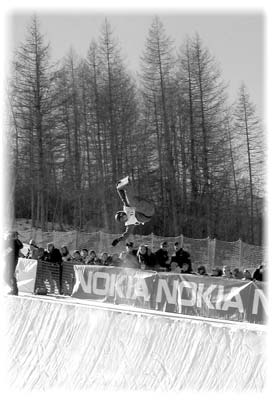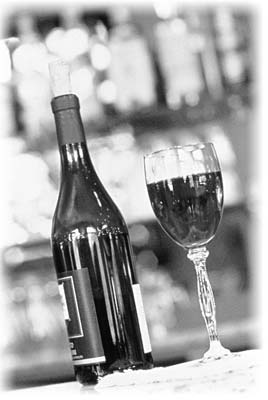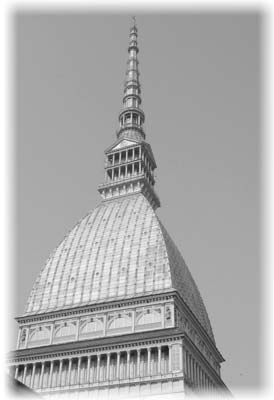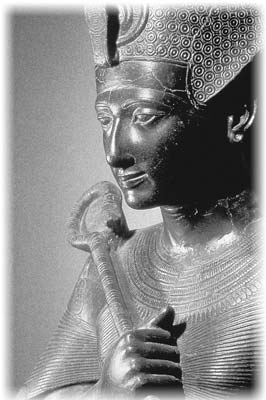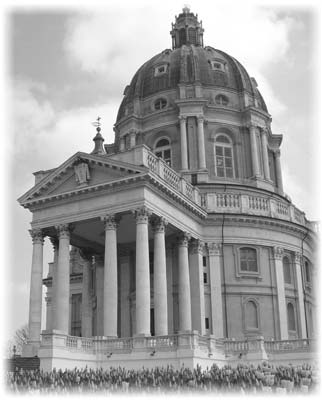Turin — one of Italy’s best-kept secrets
by Jim Sajo, Polcenigo, Italy
Italy’s Piedmont region hides anonymously in the extreme northwest, nestled against France. Anonymity will be lost in February, however, when the capital and most important city, Turin (Torino), hosts the 2006 Winter Olympics. The Games give Turin an opportunity to shake its less-than-accurate “motor city” image. During many stops there over the past year, I found Turin enchanting and modern, regal and bohemian, elegant and raw, glorious and passionate.
If you plan to be among the expected 1.5 million visitors during the Olympics, you’ll see a new and vibrant city — the result of $6 billion in new construction and restoration projects. When not cheering for skaters or skiers, visitors can stroll through Turin’s wondrous museums or enjoy some of Italy’s finest dining, including an impressive offering of international cuisine — not a bad lineup for a place once considered a cultural desert. Here is a quick look at Turin’s highlights.
Olympic excitement
This year, at 20 locations spread over nearly 4,000 square miles, visitors will find 84 athletic events in 15 disciplines and myriad support services comprised of lodging, feeding, transportation and medical care. Some venues are new, designed to offer the best in comfort and views for spectators, while other historical structures have been remodeled to host Olympic events.
Southern Turin is where you’ll find most of the action. The hub is Lingotto, a monstrous former automobile factory housing offices for 85 National Olympic Committees, the International Broadcast Center and a press area for journalists, photographers and news services. Shops, restaurants, a cinema and an art museum offer plenty of diversions. From Lingotto, there is easy access to each of the indoor competition venues.
One of the largest and most important projects was the Turin Olympic Village. Up to 2,500 athletes with their trainers and managers will live in the former General Market section of the city. The village offers lodging, shopping, relaxation areas and medical and logistics support to residents.
In what may become the symbol for the Games, a futuristic, 250-meter-long elevated pedestrian walkway provides access from the village to Lingotto.
Beyond facilities in Turin, six picturesque alpine hamlets up to 60 miles away will host outdoor competitions. If your Olympic interest lies there, you’ll need to catch a train from one of Turin’s central train stations to a mountain village, either Bardonecchia, Oulx or Pinerolo. From there, frequent shuttle service (free to ticket holders) will carry you to your destination.
Check out the Torino Olympic Organizing Committee’s website (www.torino2006.org) for more details.
Delicious dining
Italians do not often miss a good meal, and those in Turin are no exception. But with the enormous variety of bread, pasta, cheese, meat, fish and wine to choose from, you’ll need a bit of advice. The truth is that just about anything will taste good, but I found the best tables in town have truffles, Barolo wine and chocolate.
Turin’s most famous gastronomic celebrity, the truffle (tartufo), is a fungus that grows just belowground among the roots of hardwood trees. While the black truffle proffers a mild flavor that diminishes with cooking, its royal white cousin has a pungent, powerful taste that stands up to pasta, risotto or any cut of meat.
Truffle collection in Italy is shrouded in stealth and mystery. Specially bred dogs sniff out the treasure for their masters. Once removed from the ground and wrapped carefully in delicate linen handkerchiefs, the prize is carried to local markets. They are sold in quiet stalls away from the din and roar of merchants selling more common goods. Prices routinely exceed $1,000 per pound.
Hours later, a waiter shaves wafer-thin slices onto your meal. The number of shavings determines the price, which will vary from stratospheric to ridiculous. The rich, smoky and aromatic delight is worth every euro.
Wash down your truffles (along with remorse at the cost) with a glass of Barolo. “The king of wines and the wine of kings” has a deep garnet color and a rich, heady flavor. Produced from the finest of the regional nebbiolo grape harvest, Barolo is aged a minimum of three, but more likely up to eight, years before it is sold.
Not inexpensive, top Barolo wines regularly win recognition at international competitions and are widely considered Italy’s best. In a typical restaurant in Turin, expect to pay $75 to $90 for a good bottle. Some labels will run well over $100.
Elegant historic restaurants in the city center compete with the youthful funky bistro scene of the Roman Quarter. The international dining options are the best in Italy, and you can even enjoy genuine pizza from Naples. Here are four excellent choices:
• Ristorante del Cambio (Piazza Carignano #2; phone 011 546 690) — Regal furnishings and lofty crystal chandeliers exude the elegance of the city’s past. The kitchen serves Continental specialties prepared to perfection. €80 for both first (pasta) and second (meat or fish) courses with wine.
• Las Rosas Taqueria (Via Bellezia #15/f; phone 011 521 3907) — Las Rosas features candlelit rooms, speedy service and distinctive tile decorations. A variety of tequila-based drinks and draft beer is matched with excellent burritos and fajitas. Be sure to try the chipotle sauce. €20 for two courses with wine.
• Punto Verde (Via San Massimo #17; phone 011 885 543) — Exclusively vegetarian, their version of a local favorite, bagna cauda, should not be missed. Superb presentation and an excellent wine list make Punto Verde a vegetarian dream. €35 for two courses with wine.
• Pizzeria da Gennaro Esposito (Via Passalacqua #1g; phone 011 535 905) — This is the best of Turin’s many authentic Neapolitan pizzerias and it is loved by local residents. €10 for a pizza and beverage.
For dessert, it is hard to imagine a more delicious combination of sins than a tasty local chocolate and a fresh-pulled espresso. Turin’s love affair with chocolate dates back to the 16th century, when Emmanuel Philibert of the ruling Savoy family toasted victory over the French with a cup of steaming hot chocolate.
By the mid-1700s, Turin’s gentry — politicians, popular artists and nobles — met regularly in the dignified atmosphere of fine cafés to enjoy a mix of coffee, bitter chocolate and milk from small glass cups. Today the drink is still a tradition, called bicerin, named for the glass in which it is served.
The modern star of Turin’s chocolate industry is gianduja, a smooth delight that mixes chocolate with the cream from local hazelnuts. The city is littered with small, elegant shops selling every imaginable shape, size and variety. Try one or more of these choices.
• Pasticceria Guardia Costantino (Via San Francesco d’Assisi #17) has served chocolate delights for more than 100 years.
• Pasticceria Ghigo (Via Po #52/b) is Turin’s most famous chocolate specialty store.
• Piacere di Cioccolato (Via Monte di Pieta #15b) features new creations daily.
Magnificent museums
Turin’s reputation as an industrial city belies the troves of art found there. Generations of collectors, not the least of them the royal Savoy family, have left a rich cultural history in elegant museums. Here are four of the most intriguing possibilities.
• Egyptian Museum (Via Accademia della Scienze 6; e-mail info@museitorino.it). Founded in 1824, Turin’s Egyptian museum is home to the largest and most impressive collection of ancient artifacts outside of Cairo. It holds more than 30,000 permanent pieces from approximately 4000 B.C. to A.D. 400. I was most impressed by the remarkable display of mummies, which complements a collection of papyri, masks, statues and reconstructed tombs.
• Cinema Museum (phone 011 812 5658 or visit www.museonazionaledelcinema.org) — Years before the film industry moved to Rome, Turin was the capital of Italian cinema. This museum is housed inside the unique space of the most identifiable building in Turin, the Mole Antonelliana.
Spread across four levels, it combines history with technology in an interactive display of 3,400 objects, machines and equipment, more than 300,000 film posters and advertisements, and a library of 20,000 books.
Visitors can wind their way through exhibits celebrating divas, costumes, animation and special effects. Movie fans should not miss this fascinating museum.
• Museum of the Holy Shroud (www.sindone.org/en/museo.htm) — Inside the Chiesa di Confraternita del Santo Sudario, the Holy Shroud Museum offers a balanced view of the faith and science surrounding the mysterious cloth, thought to be the burial cloth of Jesus Christ. The exhibit summarizes the history of tests, theories and conclusions, and photographs and artwork present a fascinating account. The shroud itself is kept in Turin’s cathedral and will not be on public display again until 2025, making this museum worth a visit.
• Marionette Museum (www. comune.torino. it/musei) — In the rooms adjacent to the Teatro Gianduja, home to Turin’s “Lupi” puppet troupe, is a small but fascinating museum honoring the art of puppetry. The collection includes scenery, costumes, backdrops and scripts from years of performances. Visitors will also see pieces from around the world celebrating the history of this unique art form.
Spectacular churches
As in all Italian cities, Turin’s churches are architectural gems. Visit these three; beyond their striking appearances, they are steeped in the city’s history and folklore.
• The Basilica of Superga — In 1706, Duke Vittorio Amedeo II along with Prince Eugenio of Savoy climbed the hill east of the Po River to assess the position of invading Franco-Spanish armies. In a prayer to the Virgin Mary, the duke swore to build a magnificent church in her honor if the city was spared. After his victory, he commissioned Turin’s best-known architect, Filippo Juvarra, to fulfill that oath.
Highlights include a lavish mausoleum dedicated to the Savoy family and a shrine to the 1949 Turin soccer team killed in a plane crash.
• Gran Madre di Dio — Erected in 1831, this imposing neoclassical church commemorates the return of King Vittorio Emanuele I and the end of French rule. Unconfirmed local folklore holds that the Holy Grail is hidden in the Gran Madre’s foundation, and her statues are linked with the prophecies of Nostradamus, who lived in Turin for years.
• Duomo di San Giovanni Battista (Cathedral of St. John the Baptist) — This rare piece of Renaissance architecture in Turin celebrates her patron, St. John the Baptist. Built in the late 1400s, the layout follows a classic Latin cross design.
Inside is the octagonal cupola of the Cappella della Sacra Sindone (Chapel of the Holy Shroud). For more than 300 years, the famous and mysterious shroud rested here. Fire ravaged the once artistically marvelous chapel in 1997, and the Shroud (undamaged in the crisis) is now closely guarded elsewhere in the cathedral.
Transportation
Turin’s modern history is founded on the automobile industry, but don’t try driving — traffic is terrible and parking, impossible. Instead, many discount airlines (Ryanair, Air One and easyJet) arrive at Turin’s airport from major cities throughout Europe. Bus and train service from the airport to central Turin is available, with departures every 30 minutes (a one-way fare costs about €5).
You can fly to Milan’s busy international airport and continue by train or bus to Turin. Be warned, though: the name of Milan’s airport — Malpensa — translates roughly to “bad idea” and is possibly the most accurately named airport in the world. That said, the train to Turin is easy to find and cheap, and the ride takes about an hour and a half.
Once in Turin, take advantage of the excellent public transportation system. Free maps of the metropolitan network are available at the offices of Gruppo Torinese Trasporti, or GTT, in the train stations. With a 2- or 3-day Torino Card, available for purchase from the tourism office for €15-€19, or a multiple-ride pass (€3) from GTT, visitors will find that buses and trams are safe and convenient. The Torino Card also grants free entry into more than 100 museums.
City info
For more information on Turin, visit the official tourism office website (www.turismotorino.org) or walk into the Atrium in Piazza Solferino, in the heart of the city. There you’ll find details about restaurants, hotels, pensions, B&Bs and tourist sites.
Turin’s main hospital, Ospedale San Giovanni Battista, is along the Po River at Corso Bramante 88/90. For an ambulance or any medical emergency, dial 118.
The general emergency number throughout Italy is 112. Dial it on any telephone and you’ll be connected to the nearest carabinieri (national police) office. To reach Turin city police, dial 113.
For decades, travelers have passed on a visit to Turin, dismissing the city as an anonymous industrial wasteland. In February, millions will arrive for the Winter Olympics. If you will be among them, Benvenuti e buon divertimento!

